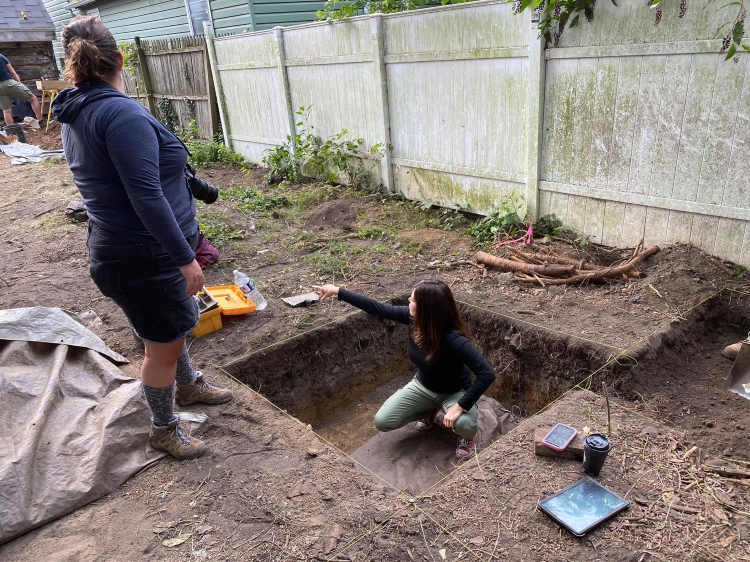Last month, at the invitation of Preservation Maryland, the Maryland State Highway Administration conducted an archaeological investigation of 417 North Jonathan Street – a property purchased by Preservation Maryland as a part of the organization’s property redevelopment program.
Throughout the week, Maryland Department of Transportation chief archaeologist Julie Schablitsky was on site overseeing the work aimed at determining the cabin’s age, who once lived there and what life was like for those residents. In addition to the property’s long connection to the African American community, documentary research also now suggests that the cabin may have once belonged to Hagerstown’s founder, Jonathan Hager.

Dr. Julie Schablitsky oversee Jonathan Street excavation, 2020.
The excavation uncovered hundreds of artifacts large and small including everyday items such as broken dishes, bottles, food remains, doll parts, marbles, animal bones, buttons, and tobacco pipes. The excavation also uncovered a pierced dime – a widely documented artifact found in sites of known African American habitation and worn as a good-luck charm intended to protect the wearer.

Pierced dime located in Jonathan Street excavation, 2020.
In addition to excavation of the backyard, the project also involved dendrochronology — an investigation of the cabin itself which involves taking small core samples of the logs to determine the year in which they were felled. The technique utilizes the characteristic patterns of annual growth rings in timber and tree trunks and should be able to determine the precise year in which the trees were felled which will help to date the building and its components.
“We want to know what these artifacts can tell us about the first citizens of Hagerstown,” Dr. Schablitsky explained. “The cabin is in the center of an African American neighborhood that was once the main street through Hagerstown. We’re looking at the evolution of Jonathan Street, the cabin and how moving a major transportation route away from that space impacted the neighborhood.”
revitalizing the past to secure the future
Black-owned businesses once thrived along Jonathan Street and some were listed in the Green Book, a guide that identified safe spaces for African American travelers during segregation. The cabin at 417 Jonathan St. had been condemned until Preservation Maryland bought the structure as part of a plan to revitalize the community. Now, in partnership with the Western Maryland Community Development Corporation, City of Hagerstown, and other partners, the plan is to use historic structures to revitalize and reinvest in this important historic community.

Jonathan Street archaeology project partners, 2020.
With the excavation now complete, archaeologists will conduct months of lab study and analysis to make any determination about the property’s history.

